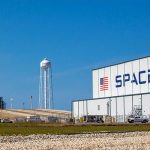The UAE created history on July 20 when the nation initiated the first Arab space mission to Mars with the launch of the Hope probe. Dubai-based Media971’s Managing Partner and co-founder Paul Mongey recounts his experience covering the event with the BBC.
The UAE leadership has, in recent years, invested heavily in a host of space programmes, of which the key ones are the Emirates Mars Mission, sending Emirati astronauts to space and building a human colony on Mars by 2112. The Emirates Mars Mission is the Arab world’s first interplanetary voyage and was launched as part of the UAE’s objective to provide a complete picture of the Red Planet’s atmosphere.
As part of this mission, the Hope spacecraft, also called Al-Amal in Arabic, will travel 493 million kilometres over a period of seven months before it reaches Mars in February 2021, marking the 50th anniversary of the unification of the UAE. The probe will spend two years orbiting the Red Planet conducting research into seasonal weather patterns in different regions and weather events in the lower atmosphere of Mars, such as very large dust storms.
The UAE launched its first satellite back in 2009 and in 2014, Sheikh Mohammed bin Rashid Al Maktoum, Vice President and Prime Minister of the UAE and Ruler of Dubai initiated the Emirates Mars Mission.

There was a three-week launch window between late July and mid-August, when the Earth and Mars were at their closest, with a seven-month journey ahead of the spacecraft. If the mission missed its scheduled launch slot, the Hope probe would have had to wait another 26 months for the next opportunity in 2024.
A couple of weeks before the launch, Media971’s co-founder and Managing Partner Paul Mongey visited the Mohammed Bin Rashid Space Centre (MBRSC) in Dubai to cover the event with the BBC. Mongey, a reputed DoP has used his Sony F55 kit on previous BBC shoots in the UAE but decided it was time to try his new Sony PXW FX9 with a recently purchased Wooden Camera v-lock adaptor, and his Dynacore 220W battery to ensure the camera would run all day.
“We shot an interview with Omran Sharaf, the EMM Project Director about the upcoming mission. We also filmed around the MBRSC site, the master control centre and the cleanroom where the Hope spacecraft was assembled. We had a great camera to cover this story.
“Following the first shoot at the Space Centre, we edited remotely at the Media971 edit suite with the correspondent filing his voice track from the BBC’s office in Dubai Media City.”

Rough edits were shared over Whatsapp and email before finalising the version for broadcast on BBC World.
Leading up to the live launch coverage, Mongey says one of his big tech choices was the LiveU encoder.
“We were offered a very good deal on a LiveU LU200 unit by one of the Dubai rental houses. I was initially nervous that this unit would not ‘talk’ to the BBC server in London. So, we arranged a test set up and shared the unit’s details with the engineers at the BBC’s MCR. They, in turn spoke with LiveU direct, only to confirm that this LU200 unit on offer was a LiveU Solo (which is great for CDN streaming to Facebook Live, Youtube Live etc) but will not connect with the broadcaster’s LIVEU receiver servers back in the UK.”
In the meantime, with adverse weather conditions in Japan delaying the launch of the Hope probe from July 14th to the 20th from Tanegashima island, the team had to rebook a LiveU LU600 unit.
“I decided to get to MBRSC a couple of hours early to set up a good live position; in other words, one with a good backdrop and close to both mains power and audio out feed in the press centre. I knew we were in for the long haul, with the launch planned for just before 2 am UAE time. And I decided to also bring some additional large 220watt v-lock batteries for the Lite Panel ‘Astra 6x’ lights, just in case.
“Due to social distancing, only 70 journalists could attend the launch coverage at the press centre. We were told each of the newsgathering teams were allowed only two people. So, the BBC’s Dubai-based correspondent and I attended. During the set up, I called MCR and connected the LU600 with their LU2000 receiver. We were able to conduct a test live down the line including the audio return set up for the correspondent via my ‘old’ on-air IFB boxes. We set up the kit, connected the LU600 to conduct several live ‘two ways’ directly into BBC World and the BBC’s 24-hour news channel. All went well.

“Earlier in the evening, while the correspondent was filing some audio links for radio, I went back over the mission control building to film additional elements for our second news package and B-Roll for the live hits. During the fifteen-minute slot, I captured a selection of shoots to tell the story of the EMM engineering teams awaiting the launch to the viewers back in the UK.”
Mongey had pre-booked 10Gb of data on four internal SIM modems and set the encoding at 5mbps.
“During the coverage, however, we used just under 5Gb of data through the evening/early morning live hits back to London.
“In all, we probably did ten hits and a 15-minute feed playing the Mission Control and press conference footage captured earlier directly from the FX9 via the LiveU 600 encoder into the BBC servers.”
The Hope probe will enter Mars’ orbit next February, where all communication data will take thirteen minutes each way.
Following this project and his success with the LiveU unit, Mongey has purchased a LiveU LU300 portable live encoder unit for future jobs.
Media971 FZ llc, which has been in Dubai for eight years, is now looking to set up an office in London at the end of the year.

















































































